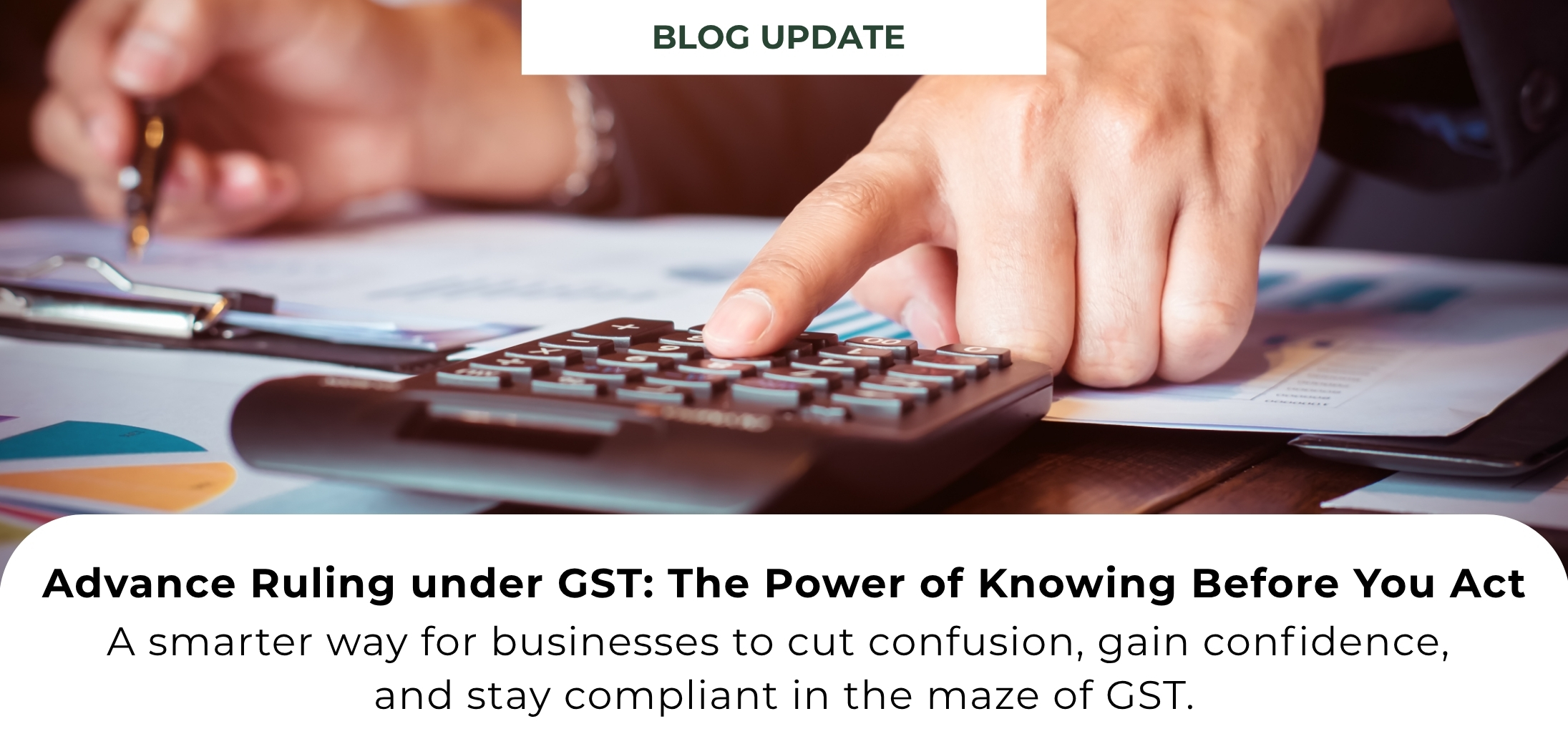
If you’re a business owner, tax consultant, or even just someone dealing with GST compliance, you’ve probably faced moments of doubt:
👉 “Will this supply attract GST or not?”
👉 “Can I claim input tax credit here?”
👉 “Should I register in another state for this transaction?”
These aren’t small questions. A wrong decision can mean penalties, disputes, or long rounds of litigation. This is exactly why the GST law introduced something powerful – the Advance Ruling system.
What Exactly is an Advance Ruling?
Think of an Advance Ruling as a crystal ball for GST.
It gives you legal clarity before you even make a move.
Formally, it’s a decision by the Authority for Advance Ruling (AAR) or the Appellate Authority for Advance Ruling (AAAR) on specific questions related to GST–like taxability, classification, input tax credit, or whether something qualifies as a supply.
In short: Ask first, act later – with legal backing.
Why Was the Advance Ruling Introduced?
GST was designed to be a “Good & Simple Tax,” but in practice, it can still feel like a maze. The Advance Ruling mechanism was built with some clear goals:
• ✅ Certainty – Businesses get clarity on tricky transactions.
• ✅ Less Litigation – Avoid fights with tax officers later.
• ✅ Cost & Time Savings – No more running around courts unnecessarily.
• ✅ Transparency – Everyone knows the rules upfront.
It’s basically a way to cut the stress and guesswork out of GST.
What Kind of Questions Can You Ask?
Under Section 97 of the CGST Act, you can approach AAR to get answers on things like:
• Whether a product/service is taxable, and at what rate.
• If a specific exemption notification applies.
• The time and value of supply.
• Whether input tax credit (ITC) is allowed.
• If you’re even required to register under GST.
• Whether an activity counts as a supply of goods or services.
So, whether you’re launching a new product, entering a complex contract, or just unsure about ITC – Advance Ruling is your go-to tool.
How Does It Work?
1. Apply (Form GST ARA-01) with a small fee under CGST & SGST.
2. Appear before AAR if they need clarification.
3. Get your ruling within 90 days.
4. If you don’t agree, you can appeal to the AAAR (Form GST ARA-02).
And voila – you have written clarity that’s binding on you and your jurisdictional GST officer.
The Good and the Not-So-Good
👍 Advantages:
• Saves you from nasty surprises later.
• Reduces litigation and compliance headaches.
• Improves ease of doing business.
• Builds confidence for both businesses and investors.
👎 Limitations:
• Different states sometimes give conflicting rulings for the same issue.
• Ruling is binding only on the applicant and concerned officer – not universally.
• Appeal stops at AAAR – no direct national-level authority yet.
Why Should Businesses Care?
Imagine launching a new product and later finding out you’ve been charging the wrong GST rate for months. The loss, penalties, and reputation damage could be massive.
Advance Ruling acts like insurance against GST confusion. It lets businesses plan, price correctly, and avoid legal disputes.
Final Thoughts
The Advance Ruling mechanism under GST is a forward-looking tool – one that encourages transparency and gives businesses confidence in a complex tax environment.
Yes, it has its limitations, but for anyone serious about compliance and avoiding disputes, it’s an option worth considering.
In the long run, if India strengthens this system (perhaps with a national-level ruling authority), it could truly make GST the “Good & Simple Tax” it promised to be.
© 2025 Business Consultant & Law Firm - Legacy Partners. All Rights Reserved.
Designed by Nuewelle Digital Solutions LLP

Legacy Partners
We typically reply in a few minutes